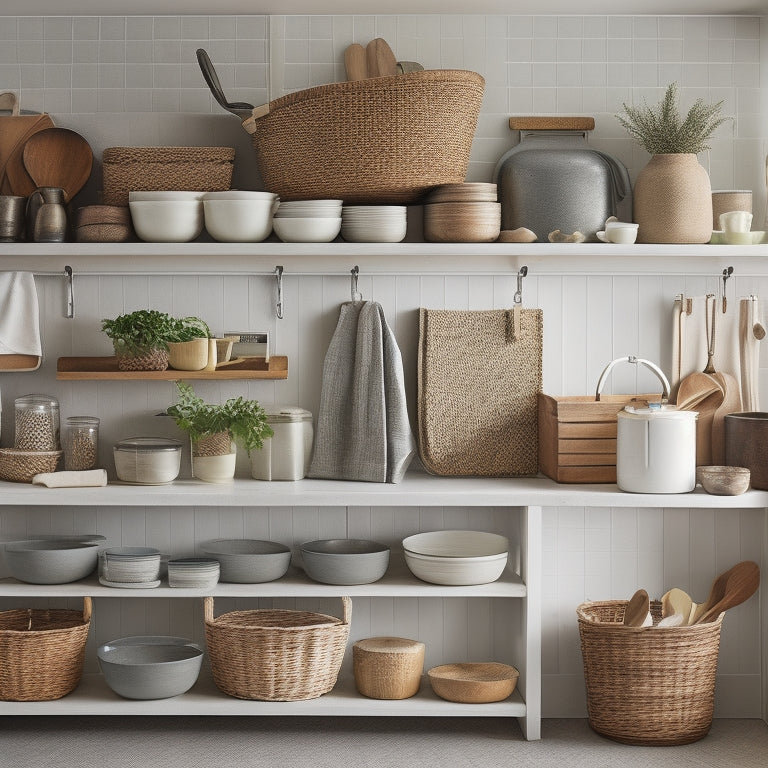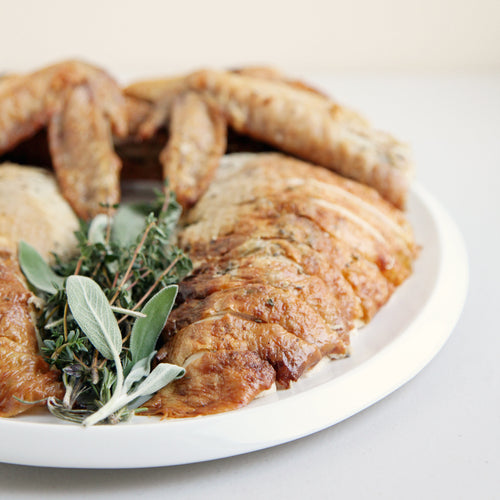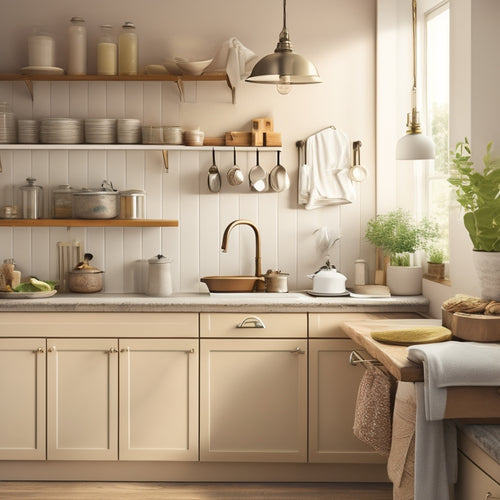
Optimize Kitchen Shelves for Better Storage
Share
You can optimize your kitchen shelves for better storage by evaluating your space and identifying areas for improvement. Measure your shelves and assess underutilized areas. Then, install shelves, hooks, and storage units that maximize your vertical storage potential. Choose durable, aesthetically pleasing materials like stainless steel, solid wood, or glass. Select shelf depths based on the items you're storing, leaving clearance between them. Consider adjustable brackets for versatility and utilize corner shelves to make the most of dead space. By implementing these strategies, you'll be on your way to a more organized, efficient kitchen - and there's still more to discover.
Key Takeaways
• Measure kitchen shelf space to identify obstructions and evaluate underutilized areas for improvement, maximizing storage potential.
• Install shelves, hooks, and storage units that fit your needs, using stackable containers and tiered organizers to optimize storage.
• Choose durable, weight-capacity-conscious, and aesthetically pleasing shelf materials like stainless steel, solid wood, or glass.
• Select ideal shelf depths based on item sizes and space, leaving clearance between items and shelves for easy access.
• Utilize corner shelf storage with carousel or pull-out shelves to maximize space and reduce clutter, enhancing kitchen organization and efficiency.
Assessing Your Kitchen Shelf Space
Take stock of your kitchen's existing shelf space by measuring the length, width, and height of each shelf, as well as the distance between them. This vital step in shelf organization will help you understand how to make the most of your available space.
Make note of any obstructions, such as pipes or electrical outlets, that may impact your storage plans.
Next, assess your kitchen's space by identifying areas that are currently underutilized or inefficient. Ask yourself: Are there any shelves that are too high or too low for easy access? Are there any areas where items are consistently cluttered or disorganized?
By understanding your kitchen's space assessment, you'll be able to pinpoint areas that need improvement and develop a plan to optimize your shelf space for better storage.
With a clear understanding of your kitchen's layout and limitations, you'll be well on your way to creating a more efficient and organized space that meets your needs.
Maximizing Vertical Storage Potential
By installing shelves, hooks, or storage units that capitalize on the often-wasted space between the ceiling and top shelves, you can effectively double your kitchen's vertical storage capacity. This is especially useful for storing infrequently used items, such as special occasion dishes or cookbooks.
To maximize vertical storage, consider the following options:
| Storage Solution | Description |
|---|---|
| Stackable Containers | Ideal for storing dry goods, such as pasta or canned goods |
| Hanging Hooks | Perfect for hanging pots, pans, or utensils |
| Tiered Organizers | Great for storing plates, bowls, or cups |
| Pegboard Solutions | Allows for customizable storage of frequently used items |
| Overhead Shelves | Ideal for storing infrequently used items, such as special occasion dishes |
Choosing the Right Shelf Materials
When selecting shelf materials, you'll want to think about durability, aesthetics, and functionality to make sure your kitchen shelves meet your specific needs and style. You need materials that can withstand the weight of your kitchen essentials and maintain their appearance over time. Shelf durability is vital, particularly if you plan to store heavy items like cookware or appliances.
Look for materials with a high weight capacity and resistance to scratches, cracks, and corrosion. Aesthetic appeal is also important, as your shelves should complement your kitchen's design and atmosphere. Consider the color, texture, and finish of the materials to guarantee they blend seamlessly with your kitchen's decor.
Some popular shelf materials that balance durability and aesthetic appeal include stainless steel, solid wood, and glass. Stainless steel shelves offer a sleek, modern look and are easy to clean, while solid wood shelves provide a warm, traditional feel.
Glass shelves, on the other hand, add a touch of sophistication and can make your kitchen appear more spacious.
Selecting Ideal Shelf Depths
Determine the perfect shelf depth by considering the size and shape of the items you plan to store, as well as the available wall space in your kitchen. You don't want shelves that are too deep, as they can lead to clutter and make it difficult to access items at the back. On the other hand, shelves that are too shallow won't provide enough storage space.
When it comes to shelf organization, depth considerations are essential. For instance, if you plan to store large cookbooks or bulk food items, you'll need deeper shelves. However, if you're storing smaller items like spices or oils, shallower shelves will suffice.
Consider the height of the items you'll be storing and leave about an inch of clearance between the top of the item and the shelf above. This will guarantee easy access and prevent clutter from building up.
Installing Adjustable Shelf Brackets
You'll want to install adjustable shelf brackets to guarantee your kitchen shelves remain versatile and adaptable to your changing storage needs. This way, you can easily reconfigure your shelves as your storage requirements evolve.
With adjustable bracket options, you can choose from a range of styles and materials to suit your kitchen's aesthetic and functional needs.
When selecting adjustable shelf brackets, consider the shelf height customization you need. Do you want to be able to adjust the shelves in small increments or make more dramatic changes? Look for brackets with fine-tune adjustments or those with larger adjustment ranges.
You'll also want to think about the weight capacity of the brackets, ensuring they can support the weight of your stored items.
Utilizing Corner Shelf Storage
Two often-wasted areas in the kitchen are the corners, where dead space can accumulate if not utilized effectively, which is where corner shelf storage comes in to maximize your kitchen's potential.
By incorporating creative corner storage solutions, you can release the full potential of your kitchen and make the most of every inch.
Here are some corner shelf ideas to get you started:
-
Install a carousel corner shelf to rotate your frequently used items, keeping them within easy reach.
-
Use a lazy Susan corner shelf to store spices, oils, or condiments, making them easily accessible.
-
Incorporate a corner shelf with baskets to store fresh produce, keeping it fresh and organized.
- Add a pull-out corner shelf to store heavy cookbooks, appliances, or infrequently used items, keeping them out of the way but still accessible.
Labeling and Categorizing Items
By categorizing and labeling your kitchen items, you'll create a system that makes it easy to find what you need when you need it. This will save you time and reduce frustration in the kitchen. To get started, group similar items together, such as baking supplies or cooking utensils. Then, assign a specific shelf or section to each group.
Use color coding to further organize your items. For example, you can use red labels for baking supplies and blue labels for cooking utensils. This visual system will help you quickly identify where items are located.
Here's an example of how you can categorize and label your kitchen items:
| Category | Shelf/Section | Label Color |
|---|---|---|
| Baking Supplies | Top Shelf | Red |
| Cooking Utensils | Middle Shelf | Blue |
| Pantry Items | Bottom Shelf | Green |
| Snacks | Left Cabinet | Yellow |
| Beverages | Right Cabinet | Purple |
Keeping Heavy Items Below
Heavy kitchen items, like pots and pans, should be stored on lower shelves to prevent them from falling and causing damage or injury. This organizing approach guarantees that weight distribution is balanced and avoids accidents. By keeping heavy items below, you'll decrease the risk of them toppling over and creating a mess.
Here are some examples of heavy kitchen items that should be stored on lower shelves:
- Large cookware sets
- Heavy ceramic serving dishes
- Industrial-sized canisters
- Standalone kitchen appliances like slow cookers or blenders
Maintaining Shelf Organization Systems
Now that you've strategically placed your heavy kitchen items on lower shelves, it's time to implement a system to maintain your newly organized kitchen shelves.
To keep your shelves organized, use shelf dividers to separate items into categories, such as baking supplies, cooking utensils, and dinnerware. This will prevent clutter from building up and make it easier to find what you need.
In addition to shelf dividers, consider using drawer organizers to maximize the storage space in your kitchen drawers. This will help keep items like utensils, spices, and snacks organized and within reach.
Clear containers are also essential for maintaining organization. Use them to store dry goods, snacks, and other kitchen essentials.
To take your organization to the next level, implement a color-coding system. Assign a specific color to each category of items, such as blue for baking supplies and red for cooking utensils. This will create a visual system that makes it easy to identify where items belong, making maintenance a breeze.
Frequently Asked Questions
Can I Use Kitchen Shelves to Store Heavy Cookware and Appliances?
You're wondering if you can store heavy cookware and appliances on kitchen shelves - the answer is yes, but you'll need to guarantee proper weight distribution and consider shelf reinforcement to prevent collapse or damage.
How Often Should I Clean and Dust My Kitchen Shelves?
You should clean your kitchen shelves every 1-2 weeks, and dust them daily, especially if you have fragile items or shelves made of wood or glass that show dust easily.
Are Glass Shelves Suitable for Storing Fragile Kitchen Items?
"Your kitchen shelves are a delicate ecosystem, where one wrong move can shatter everything. Glass shelves can be a fragile haven for your precious items, but their durability depends on the material's quality and your organizational skills."
Can I Install Kitchen Shelves Myself or Do I Need a Professional?
You can try DIY installation, but consider seeking professional help if you're not comfortable with safety precautions or don't have the necessary tools; either way, make sure you've got the right equipment and a solid plan to avoid costly mistakes.
Are Kitchen Shelves With Doors Better Than Open Shelves for Storage?
You're weighing the pros and cons of kitchen shelves with doors versus open shelves. Honestly, doors can be a blessing for space optimization and aesthetics, but they can hinder accessibility; open shelves, on the other hand, promote easy organization.
Related Posts
-

Turkey recipe for thanksgiving
Are you ready to cook a turkey for thanksgiving? We found this recipe of an Easy Herb-Roasted Thanksgiving Turkey tha...
-

5 Best Kitchen Organization Products for Arthritis Relief
You're looking for ways to make meal prep easier on your joints. Arthritis can make kitchen tasks a struggle, but the...

